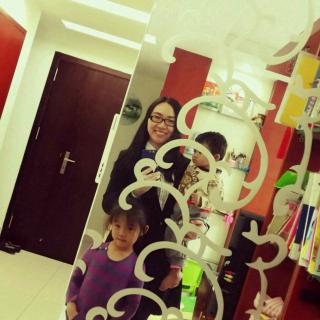
介绍:
超越语法
3-短语、从句和句子
1)短语(phrase):
a)不定式短语(infinitive phrase)如:He 1ikes to read newspapers after lunch(他喜欢在午饭后读报)中的to read newspapers after lunch。
b)动名词短语(gerundial phrase)如:Staying indoors all day is unhealthy(整天呆在家里不利于健康)中的staymg indoors all day。
c)分词短语(participial phrase)如:I saw many people walking along the lake(我看见许多人在湖边散步)中的walking along the lake。
d)介词短语(prepositional phrase)如:He came by bus(他乘公共汽车来)中的by bus。
2)从句(clause):
a)主语从句(subject clause):如What I want to say is this(我要说的是这么一点)中的what I want to say。
b)表语从句(predicative clause):如This is what I want to say(这是我要说的)中的what I want to say。
c)宾语从句(object clause):如I have said what I want to say(我说完了我要说的话)中的what I want to say。
d)定语从句(attributive clause):如This is the thing I want to say(这就是我要说的)中的I want to say。
e)状语从句(adverbial clause):如If you want to say something,say it clearly(假如你要说什么,就应说清楚)中的if you want to say something。
3)句子(sentence):
从句子结构可分为:
a) 简单句(simple sentence)只有一个主语部分和一个谓语部分,如:The people's Republic of China was founded in 1949.中华人民共和国于一九四九年成立。
b) 并列句(compound sentence)包括两个或两个以上的简单句,中间常由连词连接,如:
Tom's father worked from morning till night but he got very little money.汤姆的父亲从早干到晚,但挣得的钱很少。
c) 复合句(complex sentence)内含一个或一个以上的从句,如:It's a long time since I saw you last.好久没有看见你了。
从说话人说话可分为:
a)陈述句(declarative sentence)用来叙述一件事,如:I saw him yesterday.昨天我看见他了。
b)疑问句(interrogative sentence)用来提出疑问,如:Did you see him yesterday? 你昨天见到他了吗?
c)祈使句(imperative sentence)表示请求、命令等,如:Please come in.请进来。
d)感叹句(exclamatory sentence)表示喜怒等各种情感,如:What a beautiful voice she has! 她嗓子多好啊!
4-词序(word order)
1)主语的位置 在陈述句基本结构的最前面。如:We help each other.我们互相帮助。
2)谓语动词的位置 在主语之后。如:We go to school every day.我们每天上学。
3)表语的位置 在连系动词之后。如:It's fine today.今天天气很好。
4)宾语的位置 在及物动词或介词之后。如:
I like this place.我喜欢这个地方。(及物动词的宾语的位置)
There are many trees in this place.这地方有许多树。(介词的宾语的位置)
5)定语的位置 单词作定语,一般放在被修饰语的前面,短语和从句作定语则放在被修饰语的后面。
如:The school library has many books on
agriculture.校图书馆有许多关于农业的书。(many和on agriculture,都修饰books,many在books的前面,on agriculture则在它的后面)
6)状语的位置 修饰形容词或副词的状语放在被修饰语之前;修饰动词的状语有的放在动词之前,有的放在动词之后。如动词有宾语,状语一般须放在宾语之后。
如:The Summer Palace is very beautiful.颐和园非常美丽。(very为状语,修饰形容词beautiful,放在beautiful之前)
I know him well.我十分了解他。(well为状语,修饰动词know,放在know之后)
The students often go on a picnic.这些学生经常出去野餐。(often为状语,修饰动词go,放在它的前面)
We take exercise every day.我们每天都运动。(every day为状语,修饰动词take,在宾语exercise之后)
7)冠词的位置 冠词在名词之前。如:I met a friend at the bus-stop.我在公共汽车站遇到一位朋友。
8)介词的位置 介词一般也放在名词或代词之前。如:There is a map of China on the wall.墙上有一幅中国地图。
9)连词的位置 连词一般放在同类的词、短语或从句之间。如:They worked quickly and efficiently.他们工作速度快,效率高。
He works just as hard as everyone else although he is over sixty.他尽管六十多岁了,仍和大家一样努力工作。
10)感叹词的位置 感叹词常放在句子最前面。如:Oh,it's you!啊,是你呀!
大家还在听

